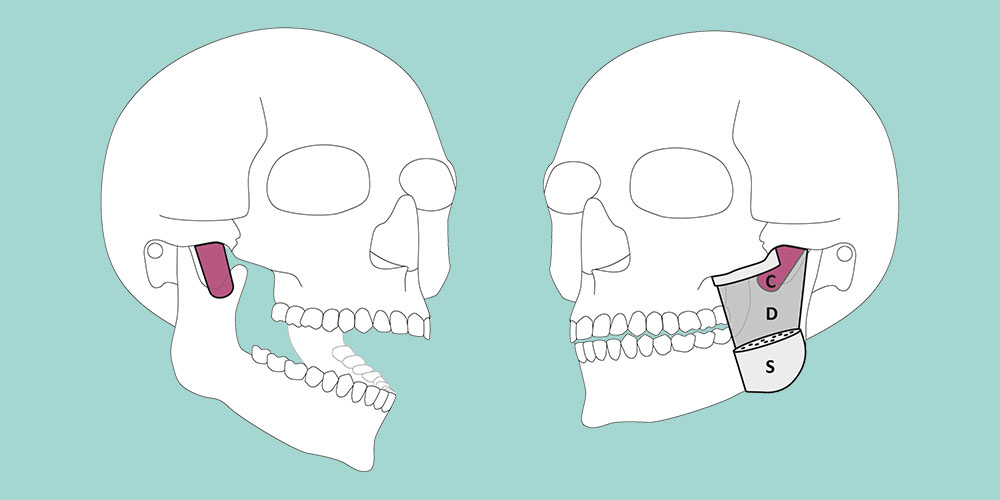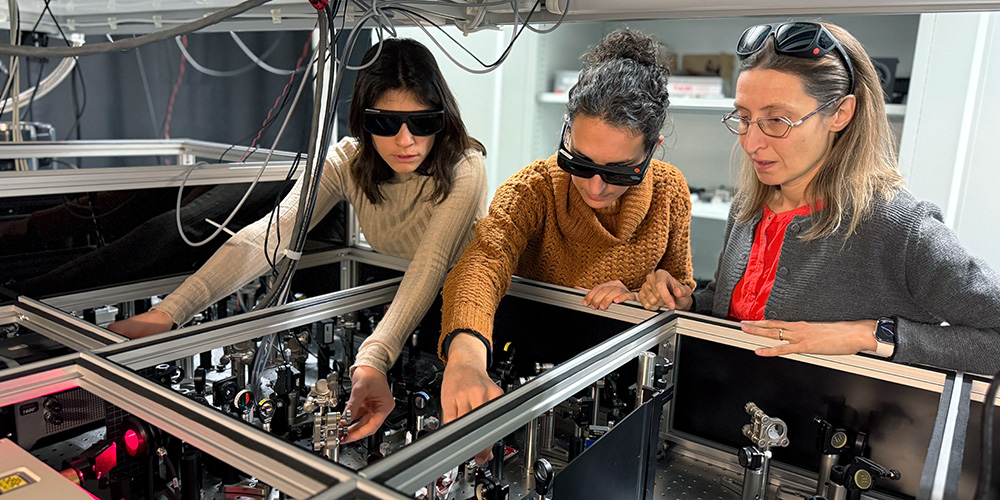New muscle layer discovered on the jaw
Human anatomy still has a few surprises in store for us: researchers at the University of Basel have discovered a previously overlooked section of our jaw muscles and described this layer in detail for the first time.
20 December 2021
The masseter muscle is the most prominent of the jaw muscles. If you place your fingers on the back of your cheeks and press your teeth together, you’ll feel the muscle tighten. Anatomy textbooks generally describe the masseter as consisting of one superficial and one deep part.
Now, researchers led by Dr. Szilvia Mezey from the Department of Biomedicine at the University of Basel and Professor Jens Christoph Türp from the University Center for Dental Medicine Basel (UZB) have described the structure of the masseter muscle as consisting of an additional third, even deeper layer. In the scientific journal Annals of Anatomy, they propose that this layer be given the name Musculus masseter pars coronidea – in other words, the coronoid section of the masseter – because the newly described layer of muscle is attached to the muscular (or “coronoid”) process of the lower jaw.
The anatomical study was based on detailed examination of formalin-fixed jaw musculature, computer tomographic scans and the analysis of stained tissue sections from deceased individuals who had donated their bodies to science. This was in addition to MRI data from a living person.
As if a new animal species had been discovered
“This deep section of the masseter muscle is clearly distinguishable from the two other layers in terms of its course and function,” explains Mezey. The arrangement of the muscle fibers, she says, suggests that this layer is involved in the stabilization of the lower jaw. It also appears to be the only part of the masseter that can pull the lower jaw backwards – that is, toward the ear.
A look at historical anatomy studies and textbooks reveals that the structure of the masseter muscle has already raised questions in the past. In a previous edition of Gray’s Anatomy, from the year 1995, the editors also describe the masseter muscle as having three layers, although the cited studies were based on the jaw musculature of other species and partly contradicted one another.
Other individual studies from the early 2000s also reported three layers, but they divided the superficial section of the masseter into two layers and agreed with standard works in their description of the deeper section.
“In view of these contradictory descriptions, we wanted to examine the structure of the masseter muscle again comprehensively ,” says Türp. “Although it’s generally assumed that anatomical research in the last 100 years has left no stone unturned, our finding is a bit like zoologists discovering a new species of vertebrate.”
Original publication
Szilvia Mezey, Magdalena Müller-Gerbl, Mireille Toranelli, Jens Christoph Türp
The human masseter muscle revisited: first description of its coronoid part.
Annals of Anatomy (2021), doi: 10.1016/j.aanat.2021.151879
Further information
- Dr. Szilvia Mezey, University of Basel, Department of Biomedicine, Anatomical Institute, Tel. +41 61 207 27 24, E-Mail: szilvia.mezey@unibas.ch
- Prof. Dr. Jens C. Türp, University of Basel / University Center for Dental Medicine Basel, Tel. +41 61 267 26 32 , E-Mail: jens.tuerp@unibas.ch



